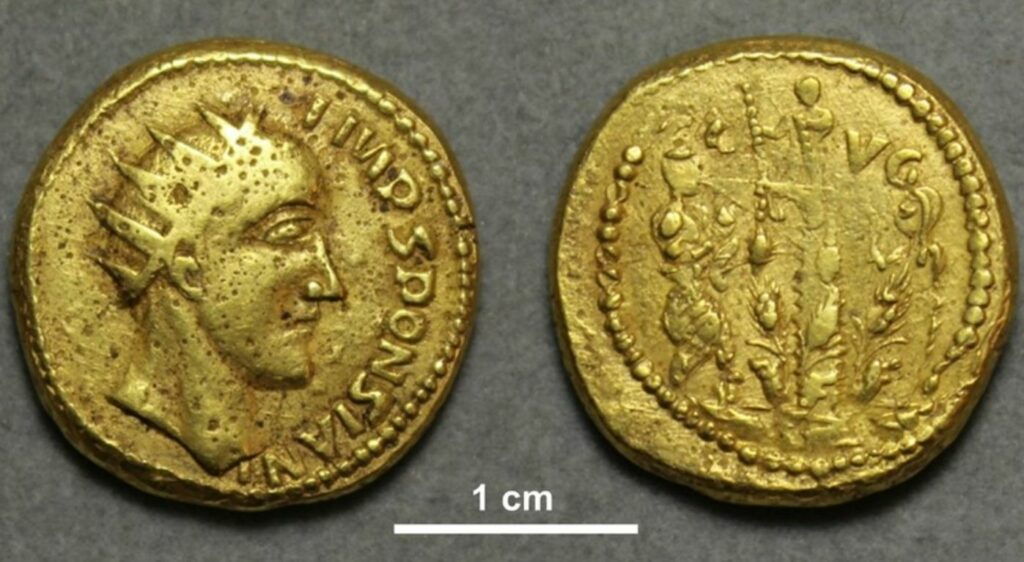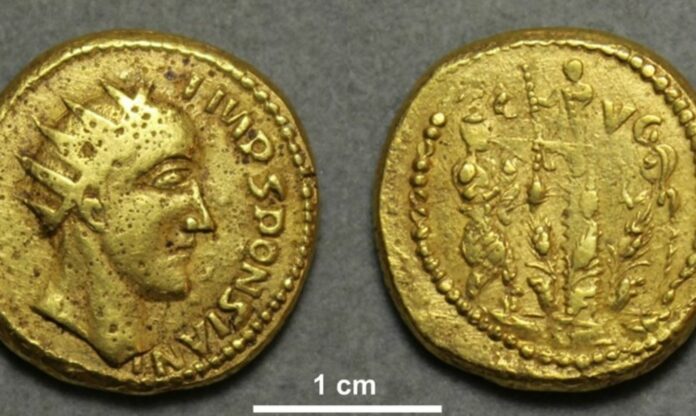“Scientific analysis of these ultra-rare coins rescues the emperor Sponsian from obscurity,” says the author.
A new analysis of several Roman gold coins discovered in 1713 that were previously assumed to be fake reveals that they are authentic, offering evidence that the commander depicted on one of the coins was in power during the 260s CE.
The findings from Paul Pearson of UCL and colleagues were published today in PLOS ONE.
Roman mints made coins with images of the reigning emperors during the majority of ancient Roman history.
In 1713, a group of these coins were allegedly found in Transylvania. Some of them had portraits and the name “Sponsian” written on them, but there is no other evidence that a Roman emperor named Sponsian ever lived.
Although the Transylvanian coins are aesthetically similar to Roman coins from the third century, many scholars are quick to dismiss them as fakes because of subtle differences in design and production.
On the other hand, the coins don’t look like the typical forgeries that would have interested antique coin collectors.
In addition, none knew that the word “Sponsian” had ever been used by the ancient Romans back in 1713.
Pearson and his colleagues dug deeper into the physical properties of four of the coins, including the Sponsian coin, to further investigate the legitimacy of the Transylvanian coins.
They examined the four coins together with two unquestionably genuine Roman gold coins for comparison using visible light microscopy, ultraviolet imaging, scanning electron microscopy, and reflection mode Fourier transform infrared spectroscopy.
The analysis showed that the coins had deep microabrasion patterns that are usually found on coins that have been used for a long time.
The researchers also investigated the coins’ clay deposits and found evidence that, following extensive circulation, the coins were buried for an extended period of time before being unearthed.
All of the new evidence points to the coins being genuine.

By taking into account the historical record as well as the fresh evidence from the coins, researchers propose that Sponsian was an army commander in the Roman Province of Dacia at a time of armed conflict in the 260s CE.
“Scientific analysis of these ultra-rare coins rescues the emperor Sponsian from obscurity,” says lead author Paul N. Pearson.
The results of the study, suggest “he ruled Roman Dacia, an isolated gold mining outpost, at a time when the empire was beset by civil wars and the borderlands were overrun by plundering invaders.”
“This has been a really exciting project for The Hunterian,” remarks Curator of Numismatics at The Hunterian, Jesper Ericsson.
“Not only do we hope that this encourages further debate about Sponsian as a historical figure, but also the investigation of coins relating to him held in other museums across Europe.”
Source: 10.1371/journal.pone.0274285
Image Credit: Pearson et al., 2022, PLOS ONE
